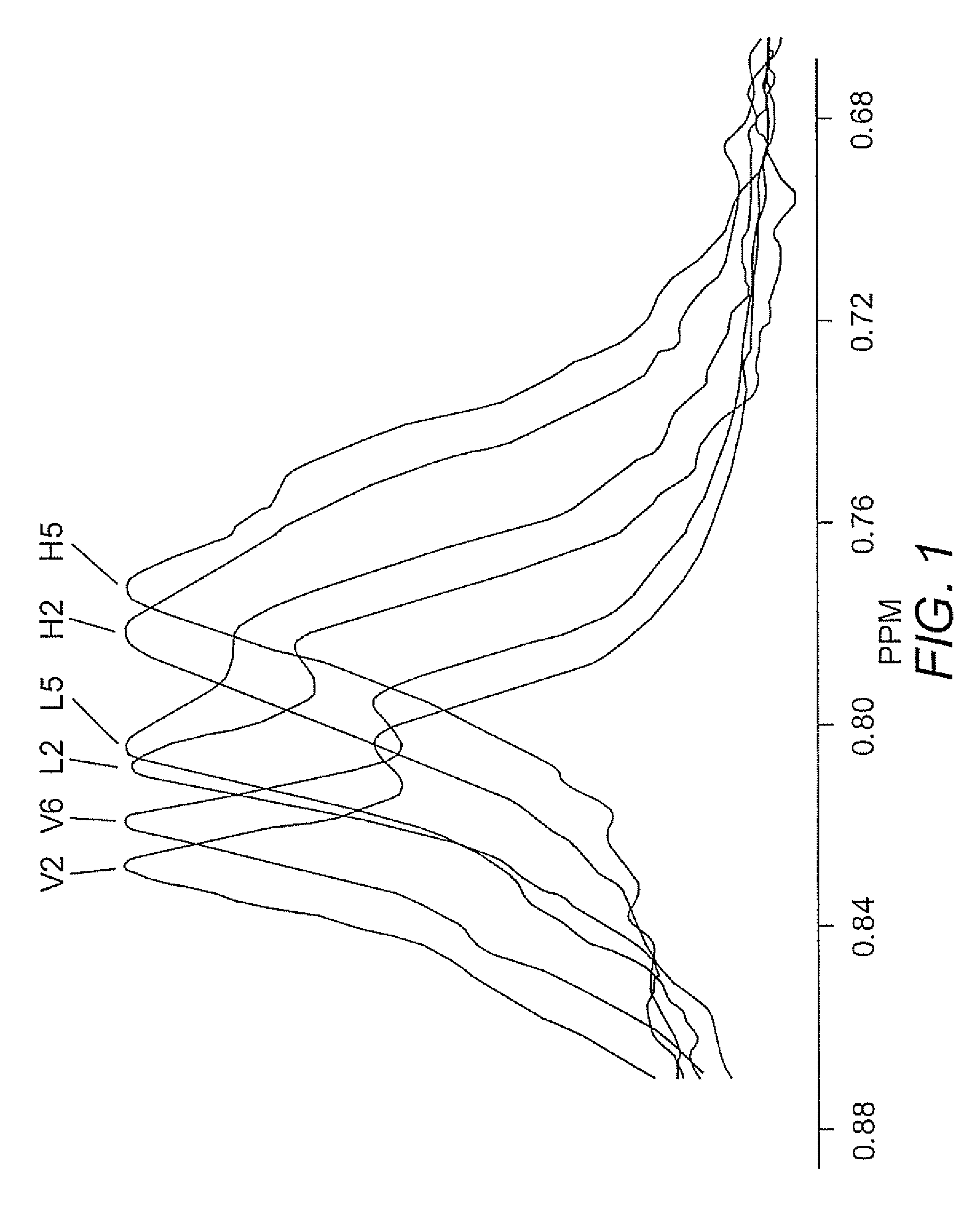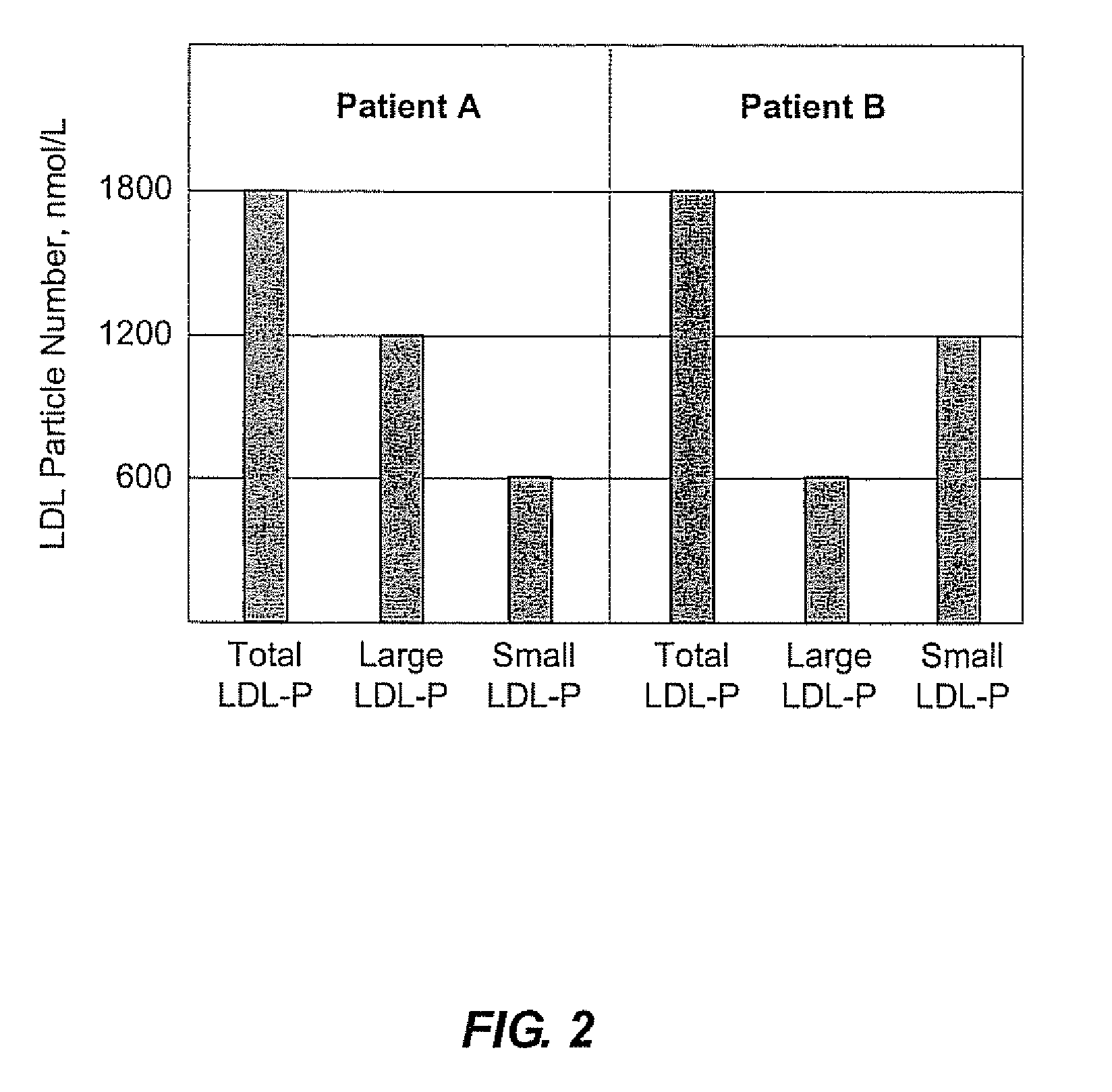Methods, systems and computer programs for assessing CHD risk using adjusted LDL particle number measurements
a technology of particle number measurement and risk assessment, applied in chemical methods analysis, instruments, material analysis, etc., can solve the problems of unstable and variable regression coefficients of nearly collinear data, inability to accurately represent a person's true risk, and inability to use statistical evaluation methods that are not nearly collinear, etc., to facilitate patient risk stratification, improve treatment decision effectiveness, and facilitate understanding
- Summary
- Abstract
- Description
- Claims
- Application Information
AI Technical Summary
Benefits of technology
Problems solved by technology
Method used
Image
Examples
example 1
[0156]Shown in the table are the relations of large and small LDL particle numbers with carotid atherosclerosis as assessed on a per particle basis. TABLE 2 is an example of LDL subclass weights using data presented in Mora et al., Both Large and Small LDL Particle Concentrations are Independently Associated with Carotid Atherosclerosis in the Multi-Ethnic Study of Atherosclerosis (MESA), Abstract presented at 2005 Scientific Sessions of the American Heart Association, Dallas, Tex., Circulation. 2005; 112: II-802.
[0157]
TABLE 2Exemplary LDL subclass weighting for Carotid AtherosclerosisΔ IMT (per 100 nmol / L)LDL subclass weightingLarge LDL-P17.5 microns1.5Small LDL-P11.8 microns1.0Data are from a linear regression model including both large and small LDL-P, adjusted for age, race, sex, hypertension, and smoking.
[0158]Shown in TABLE 2 are exemplary relations of large and small LDL particle numbers with carotid atherosclerosis as assessed on a per particle basis based on the MESA study....
example 2
[0160]Shown in TABLE 3 are the relationships of IDL and large and small LDL particle numbers with incident CHD events (nonfatal myocardial infarction and CHD death) as assessed on a per particle basis. The data was derived from results presented in Otvos et al., Low-Density Lipoprotein and High-Density Lipoprotein Particle Subclasses Predict Coronary Events and Are Favorably Changed by Gemfibrozil Therapy in the Veterans Affairs High-Density Lipoprotein Intervention Trial, Circulation. 2006; 113; 1556-1563; originally published online Mar. 13, 2006.
[0161]
TABLE 3Exemplary LDL subclass weighting for incident CHD EventsBetacoefficientLDLOdds Ratio(per 100subclass1 SD(per 1 SD)nmol / L)weightingIDL-P 28 nmol / L1.130.4365.7Large LDL-P250 nmol / L1.340.1171.5Small LDL-P450 nmol / L1.410.0761.0Data are from a logistic regression model including LDL and HDL subclasses in the same model, adjusted for treatment group, age, hypertension, smoking, body mass index, and diabetes.
[0162]Subjects were men ...
PUM
| Property | Measurement | Unit |
|---|---|---|
| sizes | aaaaa | aaaaa |
| size | aaaaa | aaaaa |
| particle size | aaaaa | aaaaa |
Abstract
Description
Claims
Application Information
 Login to View More
Login to View More - R&D
- Intellectual Property
- Life Sciences
- Materials
- Tech Scout
- Unparalleled Data Quality
- Higher Quality Content
- 60% Fewer Hallucinations
Browse by: Latest US Patents, China's latest patents, Technical Efficacy Thesaurus, Application Domain, Technology Topic, Popular Technical Reports.
© 2025 PatSnap. All rights reserved.Legal|Privacy policy|Modern Slavery Act Transparency Statement|Sitemap|About US| Contact US: help@patsnap.com



